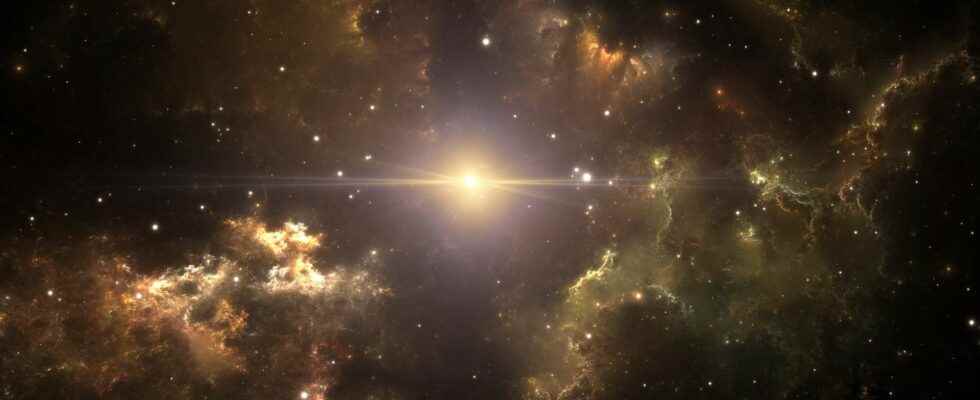By analyzing data collected by two Spanish telescopes, an international team of researchers has identified nitriles within the molecular cloud G+0.693-0.027, near the center of the Milky Way. These organic molecules, constituents of RNA molecules, would abound in the Universe.
You will also be interested
[EN VIDÉO] Black holes, galaxies, nebulae: what would the sky look like if these objects were very close? A video published by Roscosmos invites us to experience a whole new kind of night sky. Rather than taking us to the edge of the Universe, the Russian space agency brings the treasures of the cosmos to us, for a dazzling spectacle.
Characterized by the presence of a cyano group – a atom of carbon bonded by a triple bond to an atom ofnitrogen -, the nitrile family includes molecules crucial for life. Combined with a phosphate group and to one ribose (sugar), these molecules form the nucleotides constituents of the molecules ofRNA. L’RNA – I’acid ribonucleic – is present in almost all living things and performs many functions, especially in the metabolism cellular.
Bricks of life in interstellar space?
In a new study, an international team of researchers analyzed the spectra electromagnetic collected by two telescopes Spaniards, when they observed the molecular cloud G+0.693-0.027, located near the center of the Milky Way. And their discovery is rather exciting. Among all chemical species that they have identified are certain nitriles, never discovered before. There is currently nostar which forms within this cloud molecular – nebula interstellar dense enough to allow the formation ofhydrogen molecular – but scientists believe it could become a stellar nursery in the future. Its composition, which seems similar to that of some objects in our Solar system (like the comets) as well as some other star-forming regions in our Galaxymakes its study relevant for understanding the pre-solar nebula.
Abundant elements in the Universe?
However, this is not the first time that such molecules have been observed in theinterstellar spacesince they had been identified in 2019 in the TMC-1 molecular cloud, in the Taurus Constellation. Thus, with the combination of observations made over the last few years, scientists believe that the family of nitriles is one of the most abundant in theUniverse. They are found in molecular clouds, in proto-starscomets, or even in theatmosphere of Titansatellite of Saturn. Such conclusions could be in favor of the “RNA world” hypothesis, according to which RNA is the precursor of all living molecules, includingDNA and the protein. According to this hypothesis, the constituent bases of RNA would have arrived on Earth thanks to the meteorites and comets, and would not necessarily have formed on site: we now know that they can form in interstellar space, in particular in molecular clouds.
But scientists are keen to stay rational. Although this discovery is thrilling, the appearance of life on Earth required various other elements, such as lipidsnecessary for the formation of cells, thus pointing to the need to focus on how they could form from simple precursors in interstellar space.
Reading ideas for the summer with Futura?
To celebrate the start of the holidays, we offer you the Mag Futura at the preferential price of 15 € instead of 19 €, i.e. a reduction of 20% !
What is Mag Futura?
- Our first paper journal of more than 200 pages to make science accessible to as many people as possible
- 4 major scientific questions for 2022, from the Earth to the Moon
- Home delivery*
*Special offer valid until July 19. Delivery is made in France (excluding metropolitan France), Switzerland, Belgium.
Interested in what you just read?
